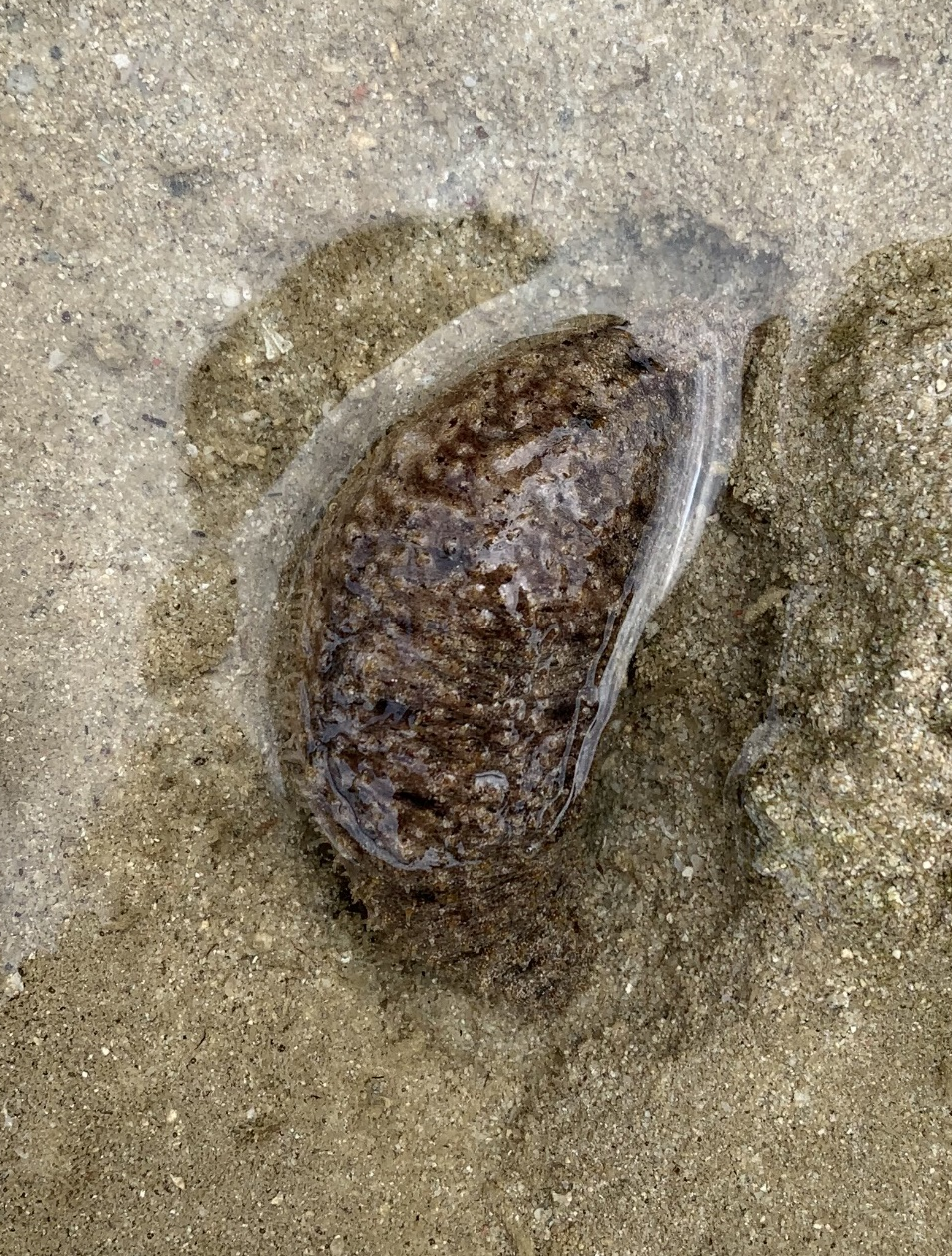Text by Henrylito D. Tacio
Photos courtesy of Davao Light
An endangered sea cucumber – called “puti-an” and commonly known in English as sandfish – has been discovered at the beach area of Aboitiz Cleanergy Park in Sitio Punta Dumalag in Matina Aplaya, Davao City.
Researchers from the University of the Philippines-Mindanao (UP-Min) discovered the existence of “puti-an” when they conducted a rapid scanning in the beach area last September 2021.
Dr. Ruth Gamboa, the lead researcher, cannot confirm if the “puti-an” has not existed in the area before. Back in 2015, the team also conducted a rapid scanning of the beach and the nearshore reef, and they never encountered “puti-an” inside the observation transects.
Known in the science world as Holothuria scabra, “puti-an” is also known as garlic bread sea cucumber as its upperside has wrinkles and sometimes black bars, thus resembling a garlic. It is classified as endangered species on the International Union for Conservation of Nature (IUCN) Red List because “its population face a high risk of extinction in the wild.”
“To be classified by the IUCN as ‘endangered’ means that ‘puti-an’ fisheries monitoring and regulations should be in place to prevent the species from being critically endangered or worse, extinct,” Dr. Gamboa said.
There are some 1,250 known species of sea cucumbers that are related to starfish and sea urchins. The Philippines is home to 200 species, and “puti-an” is one of the 14 species that are commercially important.
All sea cucumbers are ocean dwellers, inhabiting both shallow and deep ocean, studies show. More often than not, they are gleaned in shallow seagrass beds or fished in deeper reefs by free- or compressor-diving.
Aside from “puti-an,” the UP-Min researchers also found another species called Stichopus horrens or “hanginan.” This reef species is mostly found in shallow areas from near the surface to a depth of 15 meters; it generally occurs in rubbles or hidden in reef flats. It is called durian sea cucumber in English as its large soft conical thorn-shaped structure resembles that of the skin of the durian fruit.
“Hanginan” is classified as a vulnerable species, meaning its population is in a continuing decline, and their rate of reproduction cannot catch up with the rate of harvest. “In time, there is a possibility that those species will also be endangered,” Dr. Gamboa said.
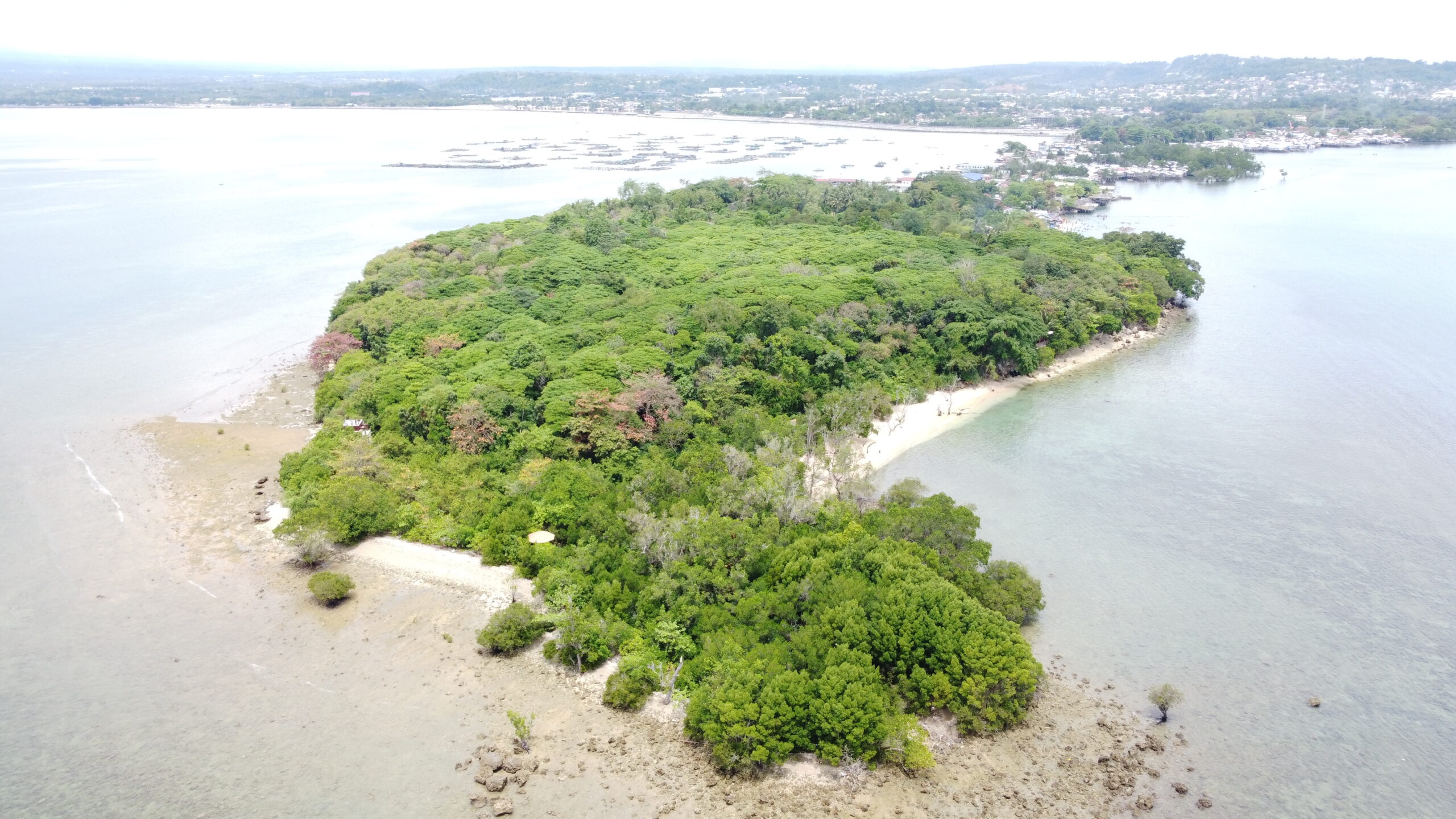
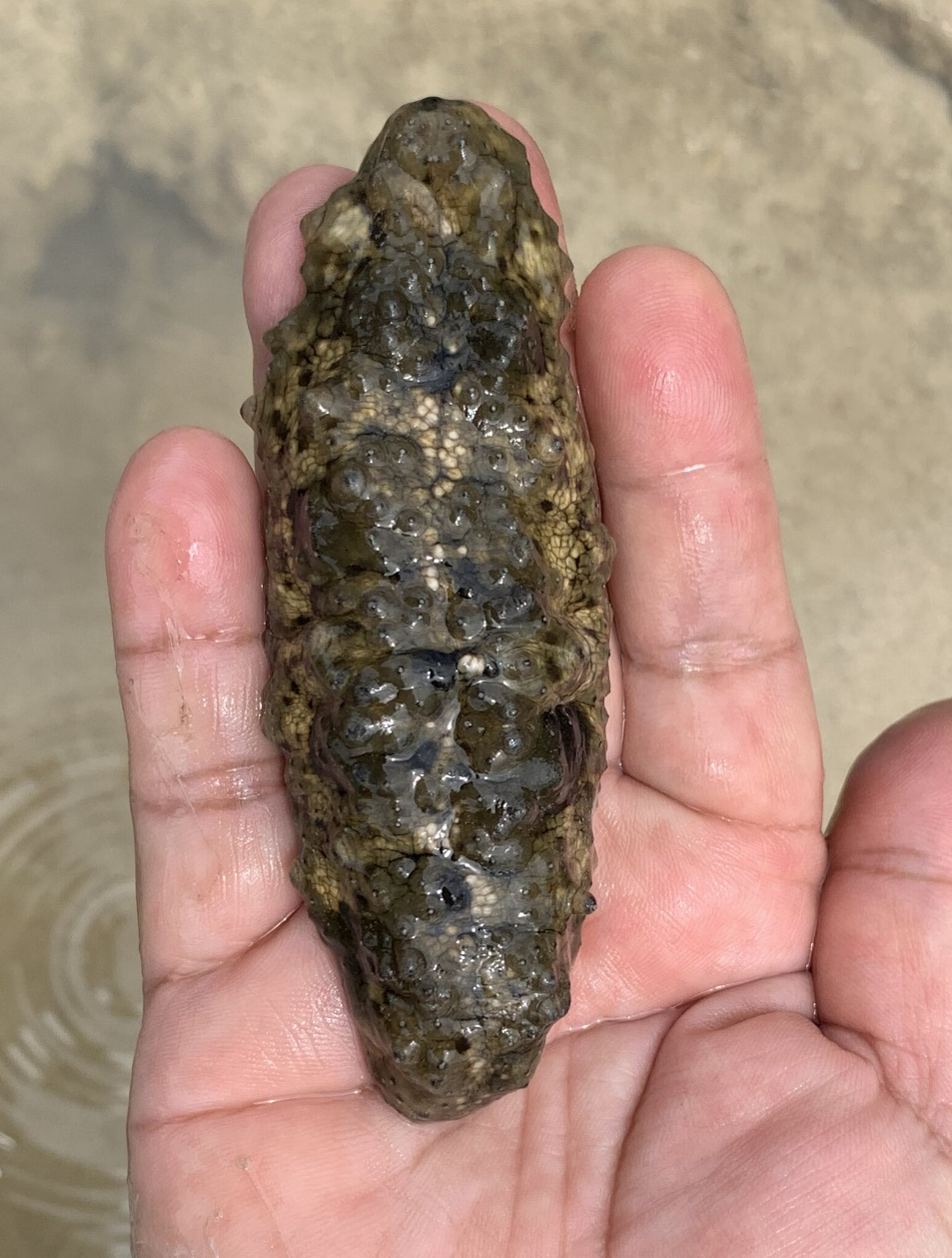
The discovery of the sea cucumbers is being hailed by the management of the Cleanergy Park, an eight-hectare ecological preserve and biodiversity conservation site. It is a sanctuary for endangered marine turtles and over 100 bird species, including 12 birds which are endemic in the country.
“We are happy about the findings of the rapid scanning conducted by UP Mindanao in the park. It inspired us to continue our conservation efforts, not only for the endangered Hawksbill Sea turtles, but for the other marine species that consider the park a safe haven,” said Rodger Velasco, president, and chief operating officer of Davao Light, an AboitizPower subsidiary.
The endangered sobriquet for “puti-an” is primarily attributed to overfishing because of its high value in the fishing trade.
“Sea cucumbers are considered to be of high value for their big demand in local and foreign markets as seafood items and source of pharmaceuticals,” wrote Dr. Rafael D. Guerrero III in his monthly column, “Straight from the Farm.”
Sea cucumbers may be weird-looking marine creatures, but to some people, they are delectable.
Across Asia, sea cucumbers have long been a staple in peoples’ diets, mainly in soups, stews, and stir-fries. They are highly nutritious – described as “an ideal tonic food” – as they provide more protein and less fat than most foods. “Like tofu, it is flavorless but absorbs the flavors of its surrounding seasonings and foods,” wrote an epicurean.
Sea cucumber is not popular among Filipino consumers. It is usually an ingredient in preparing mixed seafood and ho-to-tay dishes popular in regular Chinese restaurants. Unfortunately, the ingredient is unknown to most Filipinos.
Sea cucumber is highly prized as an ingredient in haute cuisine. Whole bêche-de-mer – as it is known among the French – can be stuffed with a filling of pork, cornstarch, and chopped fried fish. The Chinese poach the sea cukes, smother them in a thick sauce of garlic, ginger, onion, and soy sauce and call them hai sum.
Aside from their use in cooking, there’s also an emerging market for the use of sea cucumbers in the pharmaceutical and cosmetic industries.
According to analysis by principles of traditional Chinese medicine, the sea cucumber nourishes the blood and vital essence, tonifies kidney (treats disorders of the kidney system, including reproductive organs), and moistens dryness (especially of the intestines). It has a salty quality and a warming nature.
Common medicinal uses of sea cucumber in China include treating: weakness, impotence, debility of the aged, constipation due to intestinal dryness, and frequent urination.
Some species of sea cucumbers are believed to be endowed with aphrodisiac powers. The reason for this belief is the peculiar reaction of the creature on being kneaded or disturbed slightly with fingers. It swells and stiffens and a jet of water is released from one end. This behavior is similar to the erection and subsequent ejaculation of the male sexual organ.
Because of their popularity around the world, sea cucumber stocks are under intense fishing pressure, according to a report released by the United Nations Food and Agriculture Organization (FAO). Most high-value commercial species have been depleted.
“The fast pace of development of sea cucumber fisheries to supply growing international demand is placing most fisheries and many sea cucumber species at risk,” pointed out the FAO report, Sea Cucumbers: A Global Review of Fisheries and Trade.
In the Philippines, sea cucumbers are found in burrows, seagrass beds, or sandy areas with large amounts of coral rubbles. Some are found in waters of up to 20 meters deep. These can be found off the coastal waters of Zamboanga City; Zamboanga del Sur; Zamboanga del Norte; Basilan Province; Jolo, Sulu; South Cotabato; Surigao del Norte; Villareal and Catbalogan, Samar; Negros Occidental; Cebu; Calatagan, Bangas; Polilio Island, Quezon; Masinloc, Zambales; San Vicente, Cagayan; San Fernando, La Union; Bolinao, Bani and Alaminos, Pangasinan.
For almost a century, the harvesting and processing of sea cucumbers has been a source of income for many Filipino families. As Naga, the publication of the WorldFish Center reported in 1987: “The steady demand for sea cucumbers from other countries has made sea cucumber harvesting an attractive source of income for many Filipinos. In many islands and coastal villages, the income derived from it constitutes a significant portion of a family’s livelihood.”
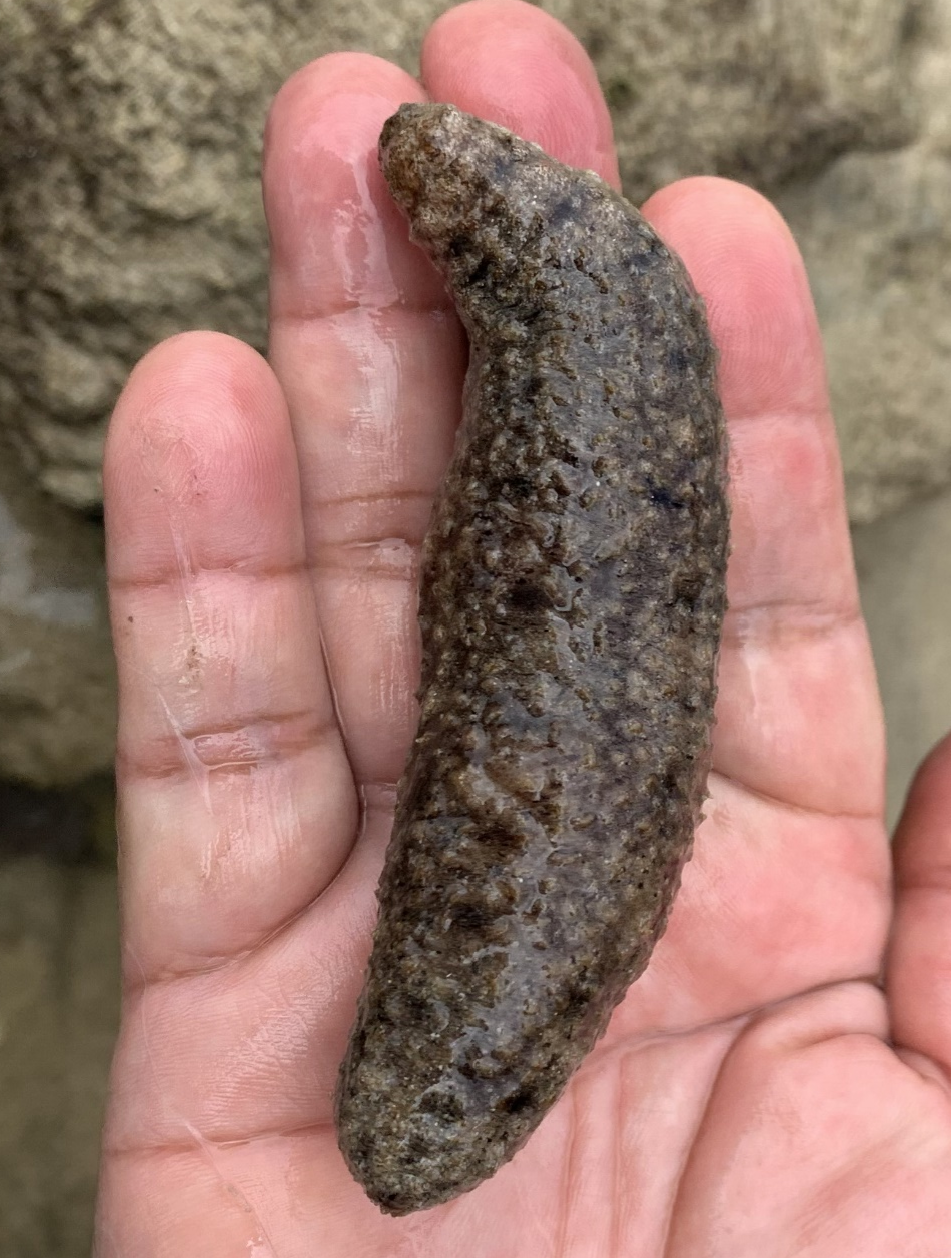
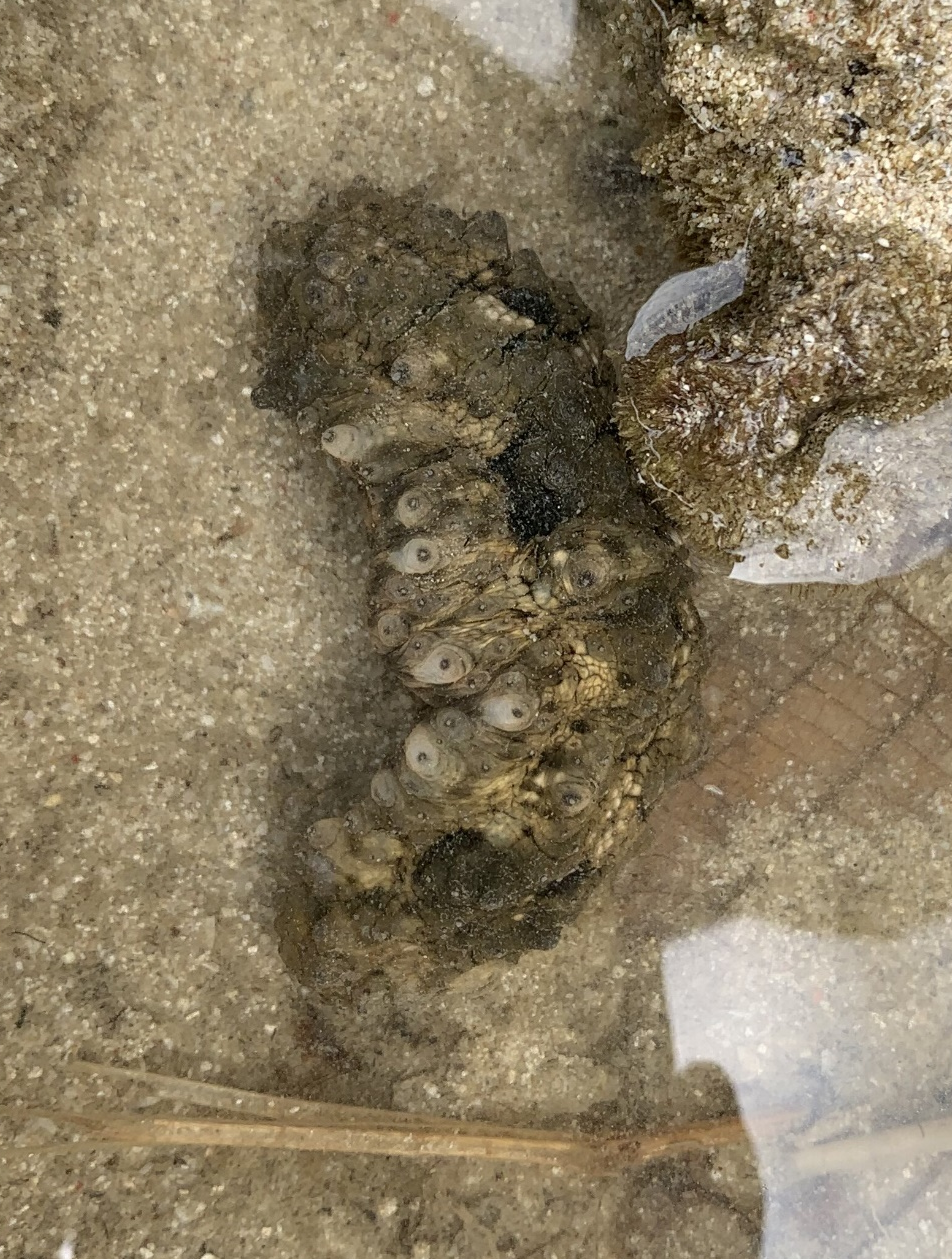
Those were in the past. Today, sea cucumbers are utilized almost exclusively as an export commodity. This huge export makes the population of sea cucumbers decline significantly. Also, there are no specific laws directed at managing sea cucumbers and so high-value species like sea cucumbers are overfished.
“Yes, we used to have a lot of sea cucumbers in our coastal areas,” admits Dr. Rafael D. Guerrero III, a fishery expert, and academician at the National Academy of Science and Technology. “They have been depleted because of over-harvesting.”
Although they can be pickled, sea cucumbers are not cucumbers at all. Rather they are a form of echinoderm along with starfish and sea urchins.
A remarkable feature of these marine animals is the catch collagen that forms their body wall. This can be loosened and tightened at will, and if the animal wants to squeeze through a small gap, it can essentially liquefy its body and pour into the space. To keep itself safe in these crevices and cracks, the sea cucumber hooks up all its collagen fibers to make its body firm again.
In particular, sea cucumbers have the remarkable ability to live for months, often up to half a year, without feeding. It is very common for these creatures to be introduced into a system that can’t support them. Once it is hungry and not fed, it slowly shrinks as it digests its own body mass to survive.
According to marine science, most sea cucumbers reproduce by releasing sperm and ova into the ocean water. Depending on conditions, one organism can produce thousands of gametes.

